“The sun never sets on the British Empire” is the oft-repeated quotation used when trying to explain British colonial style. In a nutshell, the style is a result of English citizens traveling the world during the empire’s heyday, bringing with them typically heavy woolen furnishings and adapting to hot local climates with lighter local fare.
These travelers also brought back exotic pieces from the Caribbean, India, the Far East and Africa as a way to show off how far they’d traveled. They tried to travel relatively light; campaign furniture (light, foldable and portable) also became a part of the look. The results can mean a wild mix of light bamboo or cane furniture, heavier pieces, plaids mixed with animal prints, dark floors next to white walls and paisleys mixed with chintzes.
Here are some ideas for bringing the style to your own domestic empire.
British Colonial 1: Kate Jackson Design, original photo on Houzz
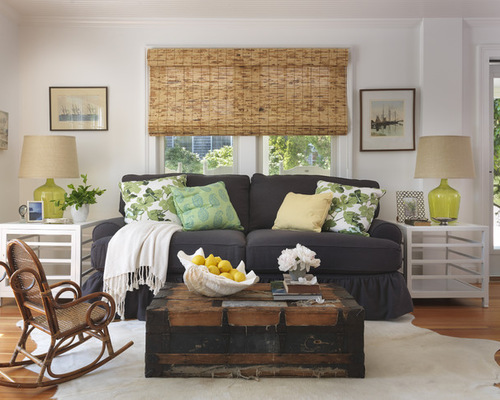

Start Your Style Revamp by Going Greige
Lighten up. The first things the British had to do when adjusting to hot and humid climates was to lighten up their dark color palettes. In the Caribbean, white, tans and light greens and blues replaced dark and heavy hues.
Other British colonial elements in this room include the tropical bamboo blinds and the steamer trunk used as a coffee table. Trunks like this would hold breakables like china as well as clothing while traveling, then serve as furniture.
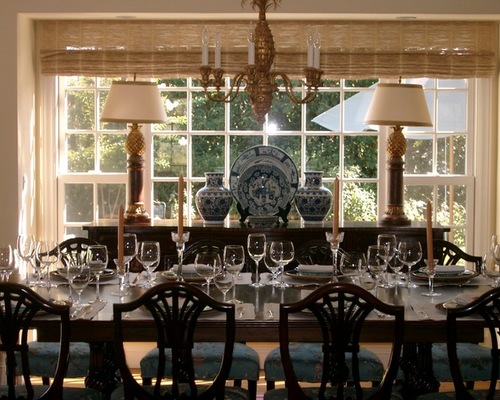

British Colonial 2: Kathleen Burke Design, original photo on Houzz
Celebrate high ceilings. High ceilings kept things cooler in hot climates, an architectural move that these colonialists spread around the world.
Mix in exotic global pieces. These traveling Brits loved to return with exotic items like bone inlay tables from India. Palm trees and rattan furniture complete the look.
Mix fabric types and prints. Light cottons and linens replaced wool. White and off-white upholstery and slipcovers replaced heavy fabrics and busy prints. Luxe prints like velvets and silks are used on accent pieces like throw pillows.
Items like zebra rugs became trophies from far-flung journeys, whether the traveler had anything to do with hunting the animal or not. Today animal print fabrics are part of the style.
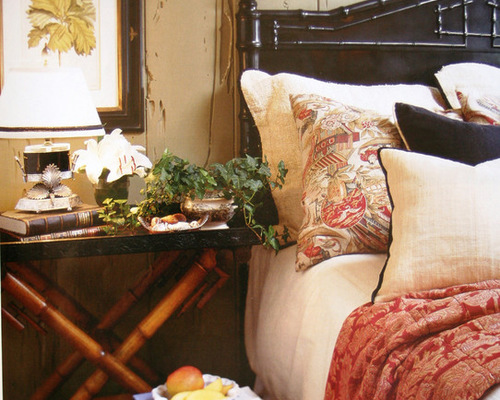

British Colonial 3: Zuniga Interiors, original photo on Houzz
Start traditionally English and layer in items from around the former empire’s domain.This room starts with a traditional English base of heavy Chippendale dining chairs, then brings in the island influence with light walls, bamboo blinds, pineapple accents and Far Eastern blue and white porcelain accents.
Join the campaign. Campaign furniture includes pieces like this bamboo nightstand. This piece could be folded up or broken down and easily transported to a new home halfway around the world.
Use natural-fiber rugs. Sea grass and jute stand up to moisture and were another perfect wool replacement in the tropics.
Travelers also brought back exotic flora and fauna, so birdcages, botanical prints and potted palms also lend the style to this room.
Check out the designers who celebrate the style. Barclay Butera is a designer who has been celebrating this look for a long time, including with a fabric collection that spans the gamut from plaids to paisleys to animal prints, as well as plantation furniture pieces.
India Hicks is the daughter of design icon David Hicks and grew up traveling from England to the Bahamas. Living the British colonial lifestyle has given her a keen eye for the style, which you can enjoy in her book, Island Life.
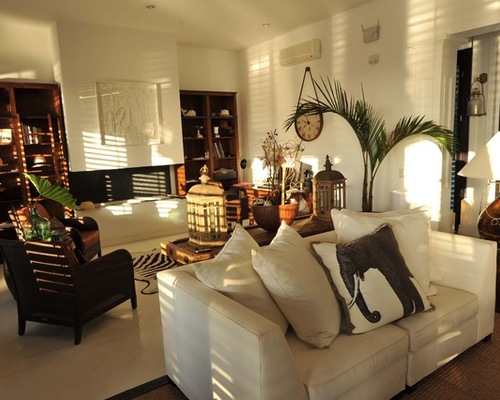

British Colonial 4: Baysix Design, original photo on Houzz
Bring the Exotic Wildlife to You with a Birdhouse
Add plantation furniture. In the British West Indies, local craftspeople pared down the type of furnishings that the British were used to and used local woods like teak, ebony and mahogany, which could stand up to the elements without warping, They also added local techniques like caning. Finally, they were known to throw in some island flair, perhaps in the form of a carved pineapple or a palm.
This bed is another good example of British colonial plantation furniture. Note the caning details on the headboard and the footboard.
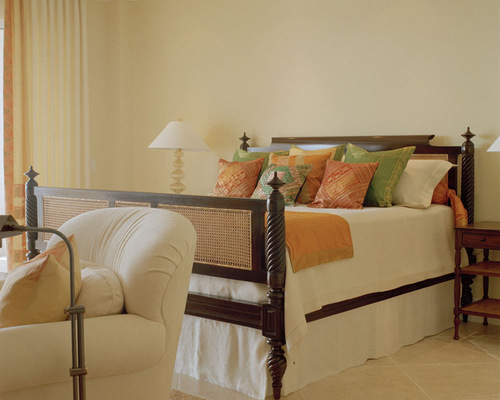

British Colonial 5: Causa Design Group, original photo on Houzz
Bring in airy draperies and canopies. Light, flowing window treatments and mosquito netting for beds were picked up in the islands.
Use grass cloth. Don’t limit the natural fibers to bedding and rugs; soft neutral grass cloth wall coverings add tropical texture.
This room is giving off major “I’m well-traveled” vibes, with the plantation bed, the ornate caved piece over the headboard, the carved masks on the walls and the exotic bedding textiles.
Bring in the pineapples.Pinepples were another common island motif that local craftspeople added to furniture. The bamboo mirror finishes off the look.
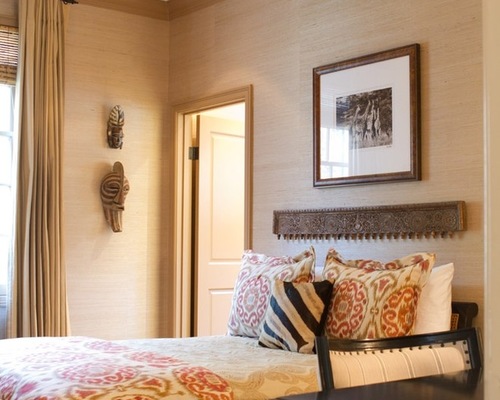

British Colonial 6: Charmean Neithart Interiors, original photo on Houzz
?
Use luggage as furniture. Steamer trunks and vintage suitcases add to the look of a brazen colonial traveler.
Outdoors, dark wood chaises, Chinese garden stools and clipped evergreens combine Caribbean, Asian and English traditions.
Create a tablescape with mementos. Channel the spirit of the style by creating a collected global tablescape. The more diverse the objects, the better this can work.
Line Your Walls With Flowy Window Treatments for a Breezy Island Feel


